We are once again heading into a government shutdown, which is paralyzing Washington, D.C. The last shutdown stretched a record 35 days in 2018–2019—and whether this one is brief, partial, or prolonged, the damage will be real.
A shutdown is not just a Washington problem. It directly threatens our river economy, undermining the clean water, healthy ecosystems, and infrastructure that local businesses and communities rely on. From commercial navigation and fishing to recreation and tourism, shutdown disruptions ripple downstream, hitting small businesses, workers, and families across the country.
Anticipated Impacts on the River Economy and Beyond
Environmental Protection Agency (EPA)
- Halts cleanups and inspections at Superfund sites along rivers and watersheds.
- Suspends routine inspections of drinking water systems and hazardous waste facilities, raising risks for communities and industries downstream.
- Pauses State Revolving Fund (SRF) programs for clean and drinking water, as well as brownfield grants critical to riverfront redevelopment.
- Delays Clean Water Act permits and compliance plans, stalling infrastructure projects and private-sector investments, including shutting down laboratories that test water quality samples, undermining timely detection of pollution.
National Park Service (NPS)
- Closes or cuts staffing at national parks and historic sites that anchor river-based tourism economies.
- Shuts down visitor centers, restrooms, and trash collection, leaving river recreation areas unsafe and unwelcoming.
- Delays maintenance on river trails, roads, bridges, and facilities, raising risks of damage or accidents.
- Curtails search-and-rescue and wildfire mitigation in river-adjacent lands.
U.S. Fish and Wildlife Service (USFWS)
- Furloughs most non-emergency staff, stalling habitat restoration and riverbank stabilization projects.
- Halts Endangered Species Act consultations and permitting reviews, creating regulatory limbo that hurts both conservation and development planning.
- Suspends wildlife monitoring and refuge management along river corridors.
National Oceanic and Atmospheric Administration (NOAA)
- Suspends coastal and riverine resilience grants, marine debris removal, and estuary water quality monitoring.
- Slows or stops monitoring of harmful algal blooms- critical for drinking water safety and fisheries health.
- Reduces fisheries management and enforcement capacity, hurting river-dependent fishing communities.
- Delays research and mapping that support states and local governments in planning for flood resilience and economic development.
Congress can Keep Government Open and Deliver a Bipartisan Solution
A shutdown doesn’t just freeze time in Washington – it weakens and paralyzes our ability to protect rivers, support clean water, and grow the river economy, which employs hunters, anglers, engineers, construction workers, outfitters, guides, dam operators, and small business owners. Congress must act together to keep the government open and protect the resources and communities that depend on a fully funded and open government.
Urge Congress to protect our rivers and communities.
One year ago today, Helene devastated my southern Appalachian home and the surrounding communities. The storm touched river valleys and communities from East Tennessee to western North Carolina, upstate South Carolina to Georgia, and beyond.
We lost valued community members.
We lost access to natural spaces we relied on for recharge and connection.
The rivers we loved for fishing, paddling, and sustaining local businesses were left clogged with trash and debris.
Infrastructure like roads, bridges, and dams failed — leaving disconnection and communities at risk.
When I think back to those early days, I remember hearing the same question again and again: “Where can I help?” And the answer was simple, help your neighbors. We formed flush brigades (without running water we hauled non-potable water for flushing toilets), filled each other’s drinking water jugs, and shared hot drinks in my driveway as we organized to make sure that everyone had what they needed most.
Of course, restoring rivers is also my job. In order to be most helpful, I knew we needed to work together with local partners — who in many cases were my neighbors. With MountainTrue and Riverlink we listed the Rivers of Southern Appalachia on America’s Most Endangered Rivers® list to call for the resources we need to recover. Our advocacy centered on making rivers and communities safer — by addressing high-risk dams, removing storm debris, rebuilding stronger water infrastructure, supporting voluntary floodplain buyouts, and ensuring access to federal recovery funds.
The progress of the past year has been grounded in one clear goal: not just to repair rivers, but to make them more resilient for the future. One major win came through House Bill 1012 that created the new North Carolina Dam Safety Grant Fund with $10 million dedicated to addressing high-hazard dams damaged by Helene. Additional resources flowed to MountainTrue to support storm debris cleanup which created jobs and ensured ongoing reciprocity for our rivers. Another silver lining was when we brought the community together to celebrate at New Belgium Brewing to toast our hard work and take action for the work that’s ahead.
Recovery doesn’t end when the debris is cleared or when the funding comes through for the dam removal. True resilience means preparing for the future knowing that the next storm is on the horizon, focusing on advocacy efforts that will help long term.
America’s Most Endangered Rivers® calls on communities to spotlight the rivers at a crossroads, where decisions in the next year will shape their future for decades. Nominations are open now and it is a powerful way to keep community safety at the forefront of public attention.
As I mark this anniversary, I feel deep gratitude for the rivers that keep flowing, for the partners who stood shoulder to shoulder in recovery, and for the colleagues who continued to inspire me with their commitment and care. Helene reminded me that resilience is both a collective and personal journey. As we look ahead, I carry the resolve that we can and must build a future where rivers — and the people who depend on them — are ready not just to survive the next storm but to thrive in its aftermath.
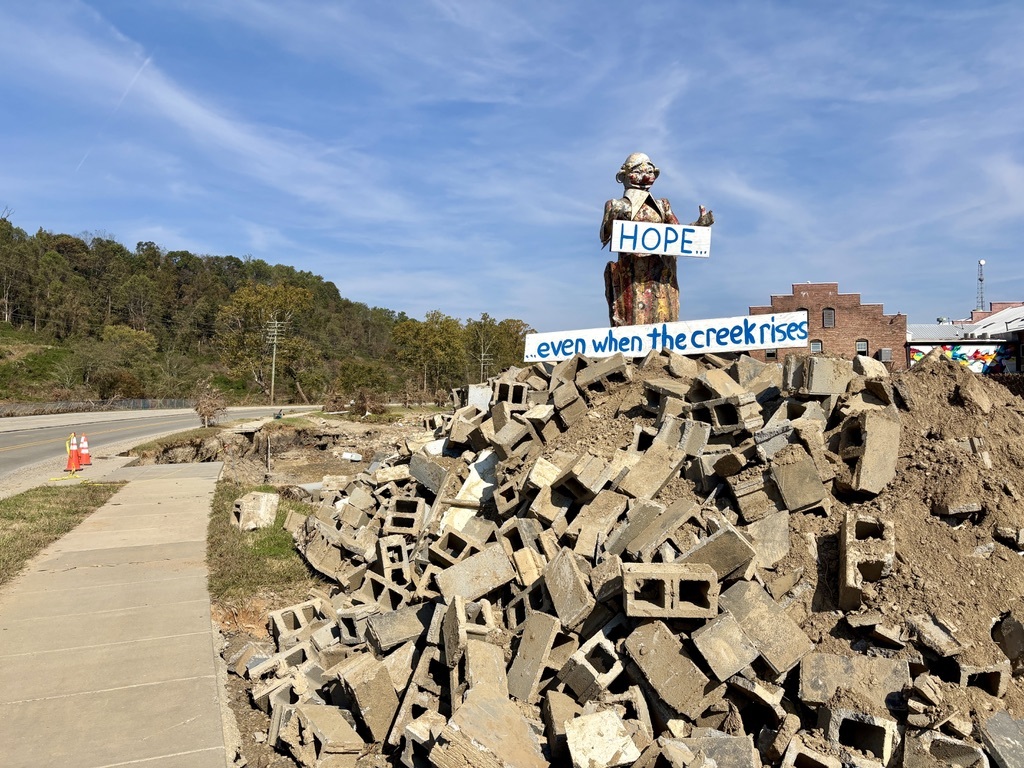
What do you learn watching a river for fifteen years?
Do you notice little changes along with big ones? Do the animals tell a story? Does the water share its secrets?
How does public funding investment help to restore rivers?
American Rivers has been working with a group of experts along the Patapsco River in Maryland for more than a decade to answer these very questions. It has been a monumental group effort to document the river’s response to dam removal in terms of changes to biology and physical structure.
The process of monitoring the Patapsco River started back in 2009 before the Union and Simkins dams were removed (2010 and 2011) and continued through the removal of Bloede Dam in 2018. Monitoring the river was required by regulators for five years following completion of each project to track any changes to the river and its aquatic communities.
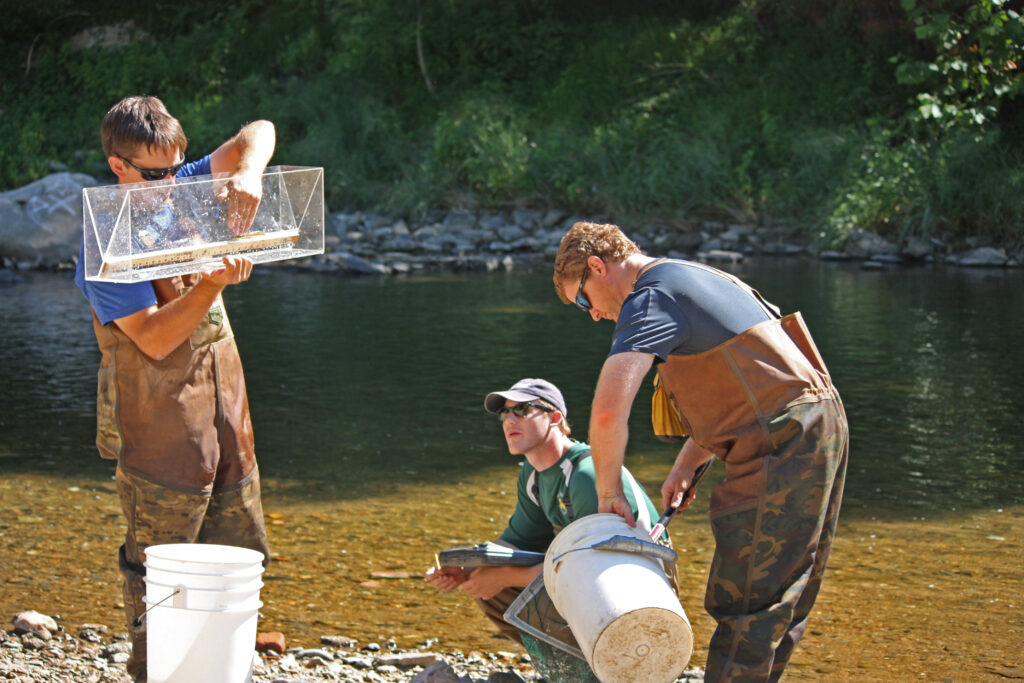
The main goals of these dam removal projects were to:
- Reconnect historic migration routes for fish species moving between saltwater and freshwater
- Provide access to upstream spawning and rearing habitat for migratory and resident aquatic species
- Eliminate a documented public safety hazard and attractive nuisance
Monitoring the river allowed us to figure out if our projects goals were met and to ensure nothing crazy happened as a result of the dam removals.
We considered questions like— what will happen to the native fish if we remove these dams? Will migratory fish be able to access spawning habitat upstream? Will the tiny critters known as benthic macroinvertebrates (essentially, water bugs) experience any changes as a result of habitat alterations?
We also considered what would happen to sediment and water flow if these dams were removed. We contemplated questions like— how fast will the sediment leave the former impoundments and move downstream? Where will the sediment go and what will be left behind? Aquatic animals live in and on the sediment, and they may look for certain sediments for spawning, so these queries impact them as well.
I am happy to share that through the extensive monitoring effort, American Rivers and our partners have determined that the objectives of this dam removal project were achieved.
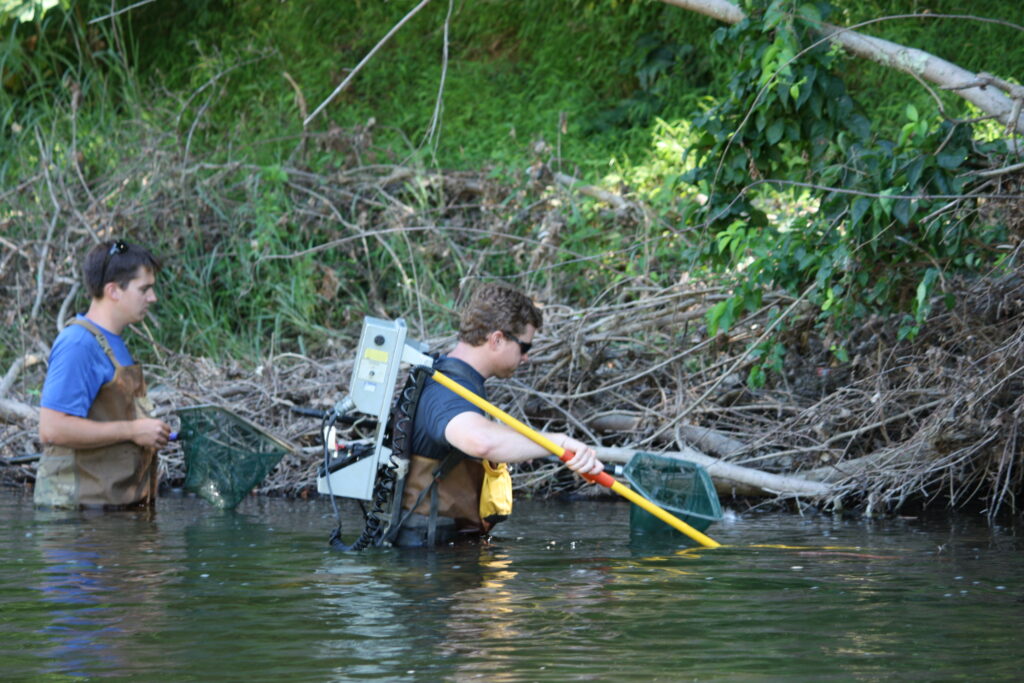
American Rivers has compiled our Patapsco River Restoration Project Research into one easy to access page: https://www.americanrivers.org/patapsco-river-restoration-project-research/. This page illustrates the depth and breadth of the vast amount of knowledge that was gained from this publicly funded effort. We plan to continue updating the site as more data and articles are published.
Key Takeaways
Biological Monitoring
- Some species of migrating fish, including alewife and blueback herring, are making their way above the former Bloede Dam and spawning. MBSS even noted that nine species known previously to only be observed downstream of the Bloede Dam were observed upstream.
- Egg/larvae sampling results further verified that blueback herring actively spawned in the restored reach above Bloede Dam in 2024.
- Both alewife and blueback herring environmental DNA (eDNA— these are little bits of genetic material that living things leave behind in the water) was detected at sites upstream of Bloede Dam after the dam’s removal, but not before.
- American eel spread out once the Bloede Dam was removed and were climbing the eel ladder at Daniels Dam in droves.
- Benthic macroinvertebrates and resident fish seemed to recover fairly quickly after the completion of the project.
Physical Monitoring
- The physical (or geomorphic) changes to the river followed what was predicted by researchers based on site-specific modeling and monitoring results at other dam removal sites.
- The vast majority of sediment within the Bloede Dam impoundment evacuated within the first year post-removal.
- The sediment was observed moving downstream relatively quickly and causing no significant problems downstream. The river came to resemble a more natural system once again.
If you would like to dig a bit deeper into the findings of the monitoring efforts (but maybe don’t have time to read the full reports), check out this page.
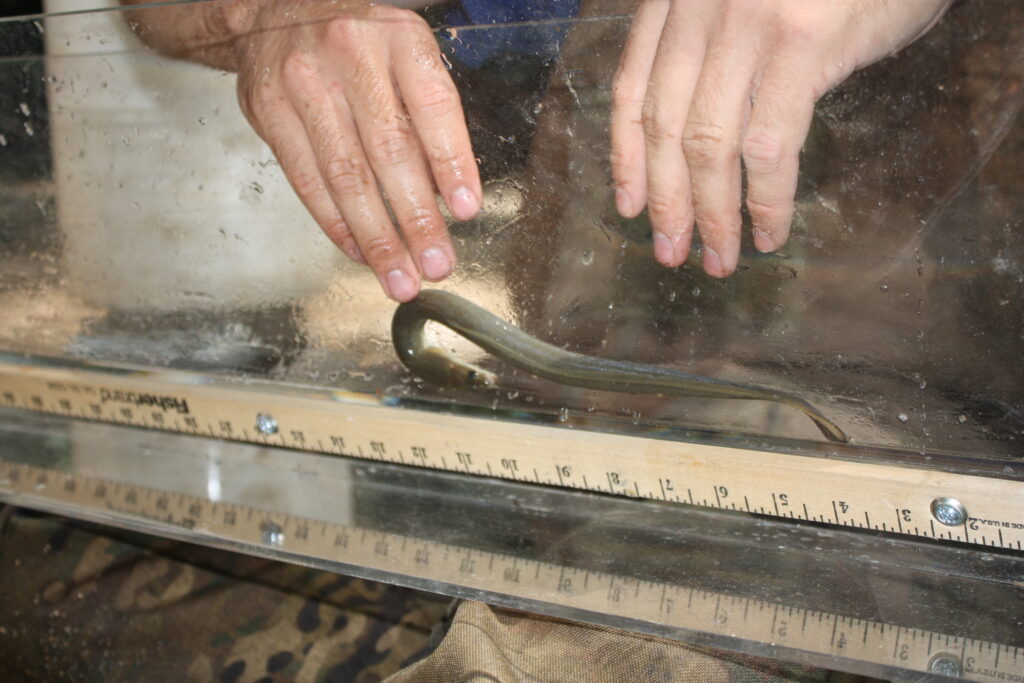
What Happens Now
It’s important, especially in cases of such a significant investment of effort and public funds, to share these results with the broader community of researchers, practitioners, and regulators. Consequently, American Rivers and our partners have been presenting on this project at conferences and other events. We will be sharing a series of conversations on this project with our National Dam Removal Community of Practice in June. You can register here.
Our partners at MBSS are working on a collection of articles for publication exploring the response of different species to the removal of the dams. Our partners at USGS are working on their second publication highlighting the sediment response to the Bloede Dam removal. A series of other publications have already been produced and can be found here. As more publications come out, we will post them to that page.
In addition, we are now talking with Maryland DNR and the broader community surrounding Patapsco Valley State Park about potentially removing the upstream Daniels Dam. Those conversations will be ongoing this year as we work through a feasibility study and community engagement process. We offer an abundance of gratitude to our funders at the National Oceanic and Atmospheric Administration (NOAA) and the U.S. Fish and Wildlife Service (USFWS) for supporting this long-term monitoring project. Public investment in river restoration is critical to ensuring that healthy rivers are supported for the benefit of all.
It’s hard to overstate the relationship between federally owned public lands and clean drinking water in the United States.
For some 180 million Americans, the water in our faucets began many miles away in a stream or river, flowing for miles through a public forest or grassland, where rain and melting snow were absorbed, stored, filtered, and cooled to nature’s perfection.
Public lands comprise 640 million acres, or about 28 percent of the nation’s landmass. They include national parks and preserves, national wildlife refuges and conservation areas, national monuments and wilderness areas. These lands provide a disproportionately high amount of the nation’s clean drinking water supply to downstream communities—and the connection is especially strong in the West.
A 2022 study by the U.S. Forest Service revealed national forests in the West comprised 19.2 percent of the total land area yet contributed 46.3 percent of the surface water supply. In the East, national forests comprised 2.8 percent of total land and 3.8 percent of the water supply.
Federal public lands supply clean drinking water to over 2.9M people living in Oregon
Take the city of Portland, Oregon, for example. The Forest Service owns about 94 percent of the Bull Run Watershed, which sits 25 miles east of the city and supplies 90 percent of its drinking water. In fact, recent data shows more than 2.9 million Oregonians receive their drinking water thanks to federal public lands.
Protected public lands and the intertwined watersheds they support is something all Americans deserve.
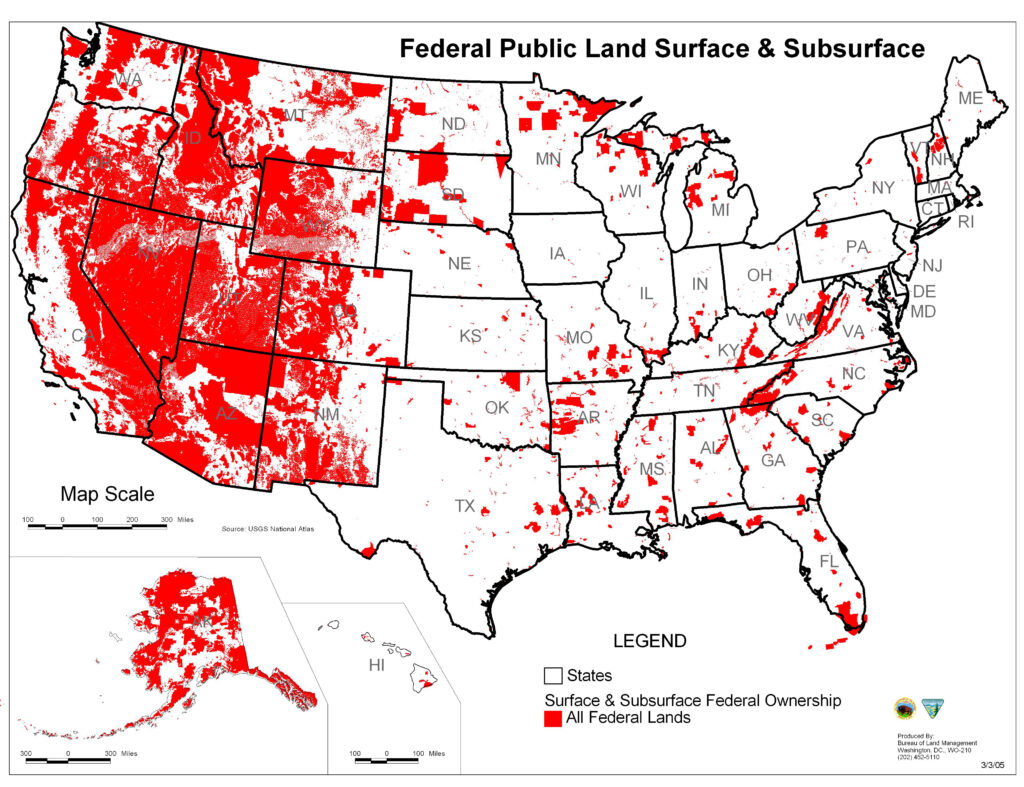
“Public lands are key to what we care about most—rivers that are filled with clean, free-flowing water to sustain people, fish, farms, and wildlife,” said Sarah Dyrdahl, Northwest regional director for American Rivers. “These lands and the rivers they support are the lifeblood of our local communities and economies.”
Historically and even now, lawmakers have proposed selling off federal public lands. It’s expected this would lead to increased clear-cutting and other extractive activities that could create pollution, reduce water quality, and ultimately increase water treatment costs. Human-caused destruction of rivers has already devastated nature and put our health at risk.
The bottom line is that what happens on the public’s land also happens to the public’s water, as discussed in our previous blog, “The Secret Double Life of America’s Public Lands.” And the public in the West and nationwide overwhelmingly supports clean water protections and conservation of our priceless public lands.
It’s essential we keep public lands in public hands, to safeguard our rivers and our nation’s water security.
2024 was a fantastic year for dam removals in the Mid-Atlantic region. Out of the 108 dams removed across the country, 39 (or 36%) came from the Mid-Atlantic region. What a powerhouse!
Did you know that American Rivers has three staff currently managing and providing technical assistance on dam removal projects in the Mid-Atlantic? Lisa Hollingsworth-Segedy is our resident dam buster, having been involved in more than 100 dam removals! Lisa works mostly in western Pennsylvania and the Ohio River Basin.
Jessie Thomas-Blate (that’s me!) works in eastern Pennsylvania, Maryland, Virginia, and recently dabbles in New Jersey. Jessie also co-leads the Virginia Stream Barrier Removal Task Force, which is a community of practice focused on increasing collaboration amongst professionals working on various aspects of dam removal and road stream crossing projects. We have a similar community of practice in Pennsylvania that Lisa and Jessie help co-lead called the Pennsylvania Aquatic Connectivity Team. In fact, many states have these collaborative groups working to advance river restoration in a more coordinated way.
Newer to our team is Corinne Griffith-Butler who is supporting projects in Pennsylvania and Maryland. Corinne will be helping a lot with outreach in Maryland and helping to knock down the queue of waiting projects in Pennsylvania.
Here is the breakdown of dam removals in Mid-Atlantic states:
- Maryland: 1
- New Jersey: 2
- Ohio: 2
- Pennsylvania: 27
- Virginia: 7
Virginia
On Rock Island Creek (a James River tributary) the six-foot high Baber Mill Dam was removed after nearly 200 years. This was an important project to support the proliferation of the endangered James spinymussel by reconnecting 45 upstream river miles of habitat. Many freshwater mussels rely on species such as American eel and sea lamprey to move around in river systems. The forestry management company Weyerhaeuser worked with Virginia Department of Wildlife Resources to help restore this river.
Just slightly farther north, the long-awaited Ashland Mill Dam (13 feet high) was removed on the South Anna River in Ashland, Virginia. Davey Mitigation, a private ecological restoration firm, completed this high priority project in pursuit of mitigation credits; credits issued by the U.S. Army Corps of Engineers and the Virginia Department of Environmental Quality that are sold to developers to offset environmental impacts of future projects in the York River watershed. This is the first time a dam removal project of this type has been implemented in Virginia using this business model, which offers a way to protect the environment at no cost to taxpayers. The dam’s removal will give access to at least seven species of fish, including American shad, that are currently blocked from accessing hundreds of miles of historical spawning and rearing habitat above the dam.
Ohio
The tallest dam removed in the Mid-Atlantic in 2024 was Timber Lake Liberty Dam (34 feet tall) on a tributary to the Olentangy River in Delaware County, Ohio.
The Warren Water Works Summit Street Dam (10 feet high) was removed as part of a large, regional effort to remove low head dams and restore water quality and habitat within the Mahoning River. Additional dam removal projects are in various stages of planning for removal upstream and downstream of the Summit Street Dam, which altogether will result in nearly 35 miles of free-flowing Mahoning River. As more of these dams and their accompanying sediments are removed, the recruitment and recovery potential of the Mahoning will improve greatly.
Pennsylvania
Wildlands Conservancy led efforts in Pennsylvania with eight dam removals in 2024. They removed six dams from the Archibald Johnston Conservation Area along the Monocacy Creek (all 4 to 8 feet tall). They also worked with the City of Easton and local agencies and partners to remove the City of Easton Lower Dam (aka Recycling Center Dam) (10 feet tall). That project was part of a larger aquatic connectivity effort to remove the first several dams along the Bushkill Creek to restore free flowing conditions to the Delaware River and Atlantic Ocean. They also partnered with PA Game Commission and PA Fish & Boat Commission to restore native brook trout habitat through the removal of a dam along SGL 129 on Dilldown Creek in Tunkhannock Township (Monroe County) (6 feet high).
New Jersey
On the eastern side of the Delaware River Basin, The Nature Conservancy removed two dams. The Paulina Lake Dam (13 feet high) removal was the final step in a four-dam removal watershed-wide restoration. The removal of all four dams on the Paulins Kill River (Columbia Remnant Dam (2018), Columbia Lake Dam (2019), County Line Dam (2021), and Paulina Dam (2024)) reconnected a total of 45 miles of mainstem and tributaries for migratory fish species including American shad, American eel, and sea lamprey. Partners (so important!) on that project included Blairstown Township, New Jersey Department of Environmental Protection, and U.S. Fish and Wildlife Service. In addition, the removal of the Cedar Grove Dam (8 feet high) from the Pequest River will amplify the impact that the removal of the three most downstream dams (in progress) will have on restoring aquatic connectivity and improving water quality for the benefit of fish and wildlife in the Delaware River Basin.
Collectively, the Mid-Atlantic dam removal projects from 2024 completed by American Rivers, our partners, and others reconnected more than 470 upstream river miles for the benefit of fish, wildlife, and local communities. A significant amount of time, effort, and resources went into these projects that will have innumerable benefits. This goes to show that the dams do not need to be tall to make major differences for rivers. Each dam removal plays a role.
You play a role too. We need you to reach out to your legislators and tell them that funding for river restoration and clean water are important to you! Tell them that you want our country to invest in healthy rivers for future generations.
What dams should we remove in the Mid-Atlantic in the coming years? Are there opportunities in your neighborhood? If you think there is a willing landowner, let us know about it.
The investment in our nation’s infrastructure in recent years is paying off. In 2024, we finally saw a rebound to pre-pandemic levels of dams removed across the country, with 108 dams demolished. Seeing momentum building once again for reconnecting and restoring rivers brings hope during an otherwise challenging time.
This year we saw excellent work happening across 27 states. More than 2,528 miles of river were reconnected across the country. This is fantastic news for our local communities, who benefit from safer places to recreate without the looming threat of a dam failure.
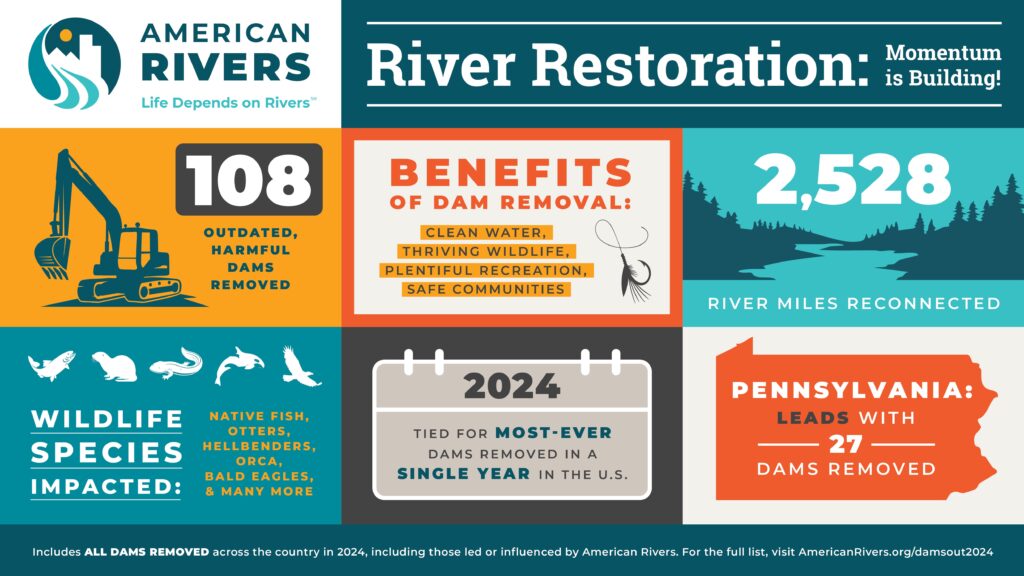
Those numbers include 400 miles of river reconnected in the biggest collective dam removal project in the country on California’s Klamath River. The Copco 1 Dam, Copco 2 Dam, Iron Gate Dam, and John C. Boyle Dam are no more, thanks to the tireless efforts of tribes and partners on the ground.
California is not the only state with multi-dam removal efforts happening along a particular river. In Pennsylvania, two six-dam removal projects happened in 2024 — this has helped keep Pennsylvania as the leader in dam removal, with 27 dams removed last year! Other states knocking them down in 2024 included Michigan (10 removals), Minnesota (7), and Virginia (7).
Examples include:
- The Forest Preserve District of Kane County, Illinois, removed the first of a series of nine planned dam removals on the Fox River, starting with Carpentersville Dam in 2024.
- The Nature Conservancy in New Jersey removed Paulina Dam on the Paulins Kill River—the final piece of a four-dam removal puzzle to reconnect 45 miles of river for migratory fish, including American shad, American eel, and sea lamprey.
- Wildlands Conservancy continues to bust barriers on Bushkill Creek in Pennsylvania by removing the City of Easton Lower Dam in 2024.
- Green River Lock and Dam No. 5 was removed by The Nature Conservancy in Kentucky, building upon the previous removal of Dam No. 6 in 2017.
- The Warren Water Works Summit Street Dam was removed from Ohio’s Mahoning River as part of a large, regional effort to remove low head dams and restore water quality and habitat.
The list goes on. Focusing on reconnecting rivers through a series of removals maximizes the impact of a single project, providing even greater benefits for community safety and river health.
Here comes the challenge: these projects have major benefits—from fish passage to removing stagnant dead zones to making rivers safer for paddlers and swimmers and more— but they come at a financial cost. Removing 108 dams in 2024 cost tens of millions of dollars. Some dams can be removed for tens of thousands of dollars, but most cost between $250,000 to $500,000. Most individual dam owners cannot shoulder that cost on their own, hey need help from the broader community. In many cases this means removing dams that were built a century or more ago. Three of the dams removed in 2024 were built in the 1700s! These structures were never intended to last forever, but it takes all of us coming together to build a healthier future for our rivers and communities.
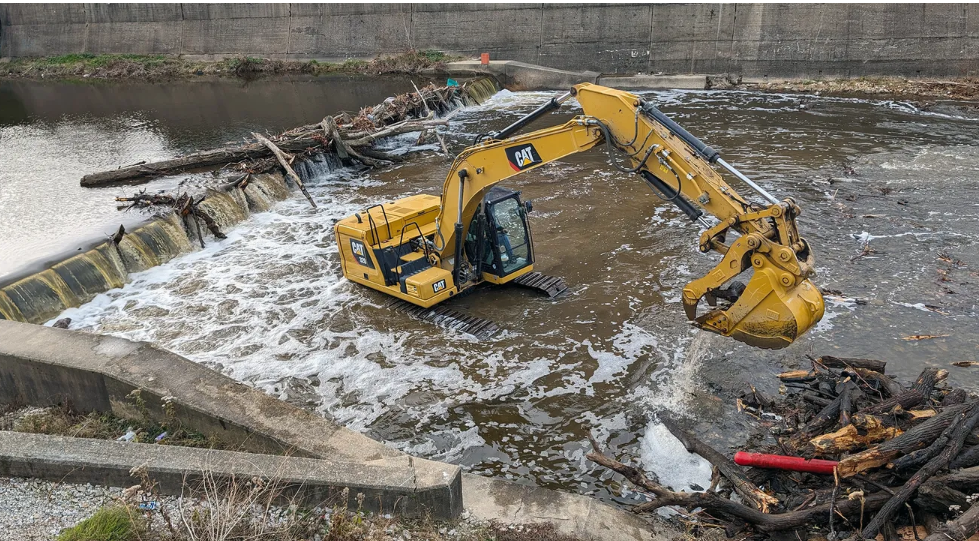
We need your help. We need you to reach out to your legislators and tell them that funding for river restoration and clean water are important to you! Tell them that you want our country to invest in healthy rivers for future generations. As we say, Life Depends on Rivers. We need you to lend your voice so that elected officials know that people value healthy rivers. If we do not prioritize removing dams in a controlled way, they will remove themselves and it will not be fun for anyone. If you’re wondering if there are any dams near you, check out the National Aquatic Barrier Inventory and Prioritization Tool. Then take action to support removing dams in your community!
In the meantime, if you want to learn more about some of the great projects completed in 2024, check out our annual summary!
We expect to hear a lot about energy in President Trump’s address to Congress on Tuesday night. One of President Trump’s latest executive orders “Establishing a National Energy Dominance Council,” aims to grow domestic energy production by changing “processes for permitting, production, distribution, regulation and transportation across all forms of American energy.”
The relationship between rivers and energy development may not jump right off the page. Still, fast-tracking energy projects or lifting public safeguards energy projects, like hydropower dams, will have an impact on rivers – our most important source of drinking water.
Therefore, finding a true balance between river protection and energy development will be vital to ensuring success in achieving President Trump’s other stated goal of having the cleanest water in the world.
Water Availability:
The energy sector is a water-hungry industry. Water is utilized in and sustains the economies of communities throughout the country. When rivers and watersheds are protected and managed responsibly and sustainably, everyone benefits, water availability is increased, and demand is better met. Conversely, improper, unrestricted use that doesn’t prioritize water recharge and downstream water availability will raise costs for both consumers and the energy sector. This is especially true in the era of extreme weather and more frequent droughts.
River Temperatures:
Power generation – and many industrial processes, like those used in new AI data centers – require significant water withdrawals for cooling and often source from rivers. When that water is discharged, it is often warmer and can significantly impact plants, animals, and overall river health. Warmer water can impact fish such as trout – a cornerstone of valuable recreation and tourism economies. Increased temperatures also lead to increases in toxic algae outbreaks, which can shut down municipal water supplies and be deadly to wildlife, pets, and livestock. Warmer water also has an impact on water quality, so it drives up the cost of treatment.
Water Quality:
Mining for fossil fuels and combustion processes creates pollution and can cause silt and dust and even heavy metals like mercury, arsenic and lead to leach into our rivers and drinking water sources. Countless communities across the country, and particularly in rural communities, already deal with acid runoff daily from mining done generations ago. Rushed or unbalanced decision-making could extend this polluting legacy that makes America anything but great. Put simply, rivers cannot absorb this pollution and still sustain natural function and be a resource we rely on. Dirty rivers also can’t sustain thriving communities.
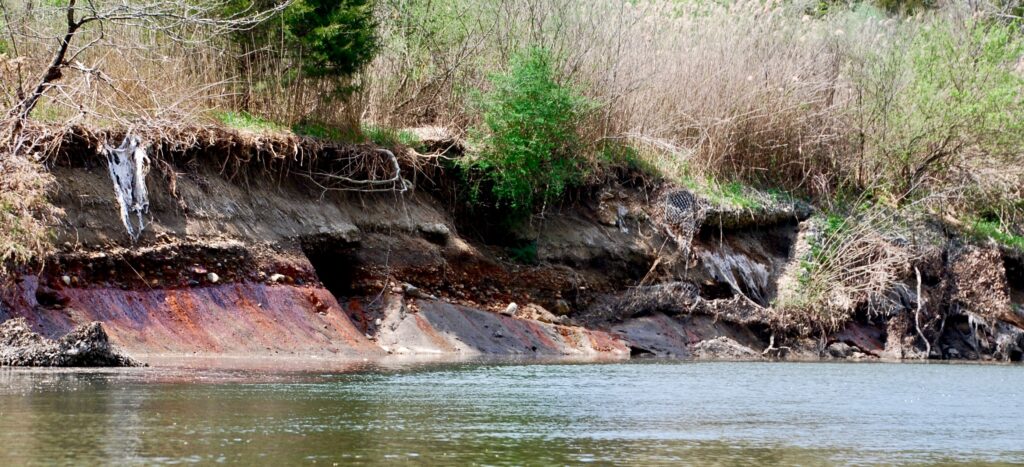
Concerningly, the U.S. Army Corps of Engineers has already fast-tracked 600 projects, including pipelines, oil terminals and mining projects, potentially circumventing the Clean Water Act and opening the door to increased pollution.
Cost of living and local economies:
Monthly water bills are already taking a major bite out of Americans’ household budgets. More pollution will make water more difficult and expensive to treat, driving up bills even more.
Pollution will also harm local economies — impacting everything from real estate values to businesses dependent on fishing, hunting, hiking, boating, and tourism. The outdoor recreation economy generates $887 billion in consumer spending, 7.6 million jobs, and it generates $59.2 billion in state and local tax revenue. Many communities depend on recreation to support their prosperity, and a dirty river is not a place people want to visit.
American Rivers’ Take:
Ultimately, this is about the people of our country. Health and safety are important to us all. American Rivers Action Fund has done polling that shows Americans care deeply about their rivers and access to clean water. In fact, clean water polls much higher than voter concern about energy.
As the Trump administration establishes and implements its energy goals over the next four years, our nation can learn from the mistakes of the past. We must leverage new and emerging technologies that allow energy development in safer ways and clean and healthy rivers to coexist, and we must stay true to common sense regulatory safeguards.
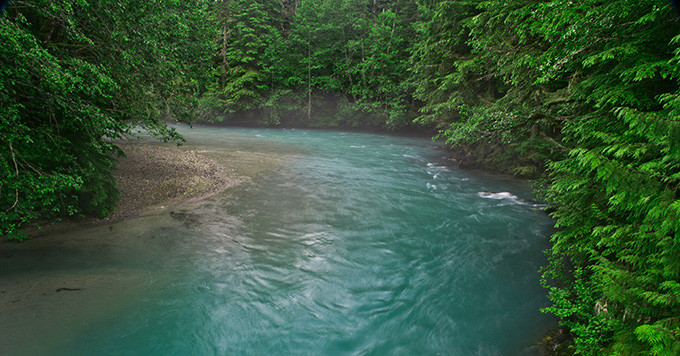
Common sense starts with maintaining an appropriate permitting regime to protect water resources from industrial development that threatens clean water – especially in areas prone to extreme weather. The Clean Water Act and its associated permits, particularly through the Army Corps of Engineers, are designed to enable the growth of industrial development and the energy industry while protecting our nation’s clean water resources from pollution. If anything, public safeguards should be strengthened and considerate of models that consider extreme weather events.
Continued public investments and federal workforce staffing in technology are necessary to ensure we have the cleanest water in the world while expanding the energy sector. Technologies that reduce water needs, ensure warmer or dirty water is not discharged or otherwise injected, and reduce pollution that exacerbates atmospheric changes are important to keeping rivers healthy.
Expanding other public safeguards to mirror “kindergarten rules” would create common sense most can agree with when it comes to energy and water. Rules, like “clean up your own mess,” would go a long way towards ending legacy pollution and ensuring no community with precious natural resources is forgotten because of extraction or power generation. Communities should not be left with permanent toxic waste sites in their backyards and legal safeguards should be put in place so that those who make money off these industries must be good neighbors to those most impacted.
Rivers and clean water are one of our most important resources as a country – especially freshwater. Taking care of it as we work towards other goals, like greater energy development, will be important to protect it.
When it comes to protecting clean water in the United States, it truly takes a village. Of course, the EPA and other agencies focused on water and infrastructure play a large role, but believe it or not, so does the Department of Justice. For over 100 years—through Republican and Democratic presidencies—the Department of Justice has enforced the nation’s civil and criminal environmental laws, including the Clean Air and Clean Water Acts. In order for these Acts to have meaning, they must be enforced. These enforcement efforts have resulted in significant public health benefits to the American people through the reduction of pollution and the protection of important natural resources.
Unfortunately, the Trump administration recently began shutting down two key sections—the Law and Policy section and the Office of Environmental Justice—within the Environment and Natural Resources Division (ENRD) of the Justice Department. Both sections play important roles enforcing environmental laws and ensuring public health and limiting exposure to pollution.
The administration also began reassigning key additional attorneys. The attorneys leading ENRD, the Appellate Section, the Environmental Crimes Section, the Environmental Enforcement Section, and the Natural Resources Section were all reassigned to positions focused on immigration—specifically “sanctuary cities.” It also suspended a 75-year-old Honors Program for entry level attorneys. This program has been a constant through many administrations—hiring some of the best attorneys out of law school to staff the division.
Understaffed, it will be difficult if not impossible for the Department of Justice to keep up enforcement and to keep our communities safe and healthy.
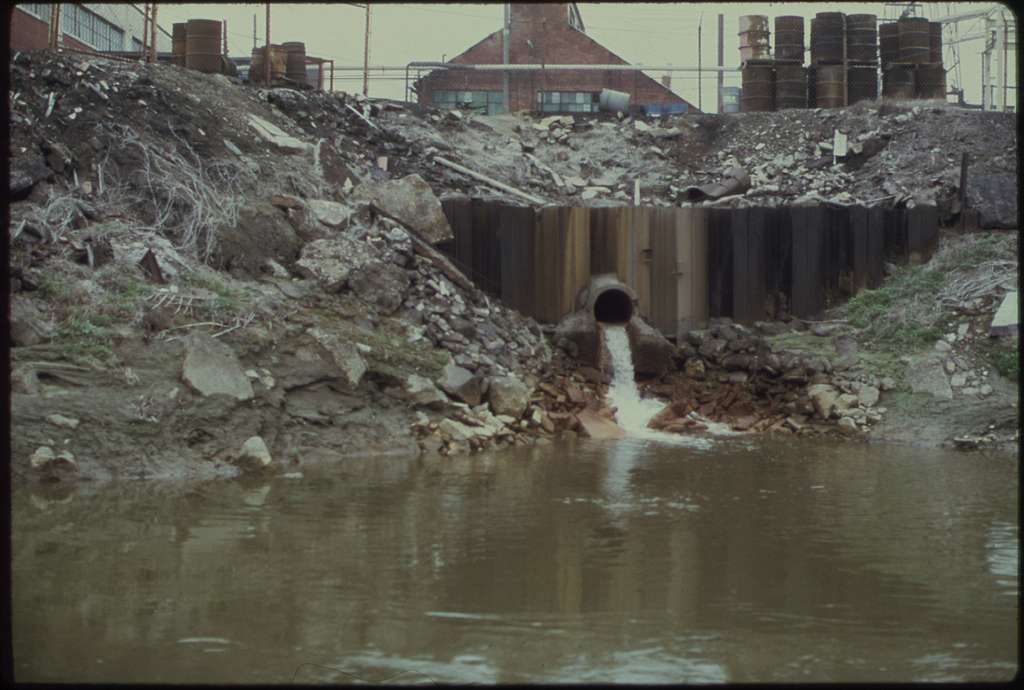
One example of the critical role these two offices play can be seen in a recent case in North Carolina. Over a four year period, an employee at American Distillation Inc., a chemical processing company near Wilmington, was illegally dumping over 50,000 gallons of chemical pollutants directly into the Cape Fear River. This was just upriver of the popular Carolina Beach State Park. They were doing this to cut corners but were exposing local communities in the area to toxic chemicals. The Justice Department’s ENRD successfully targeted the source of pollution and took the lawbreakers to court. They obtained a guilty verdict and efforts to remedy the damage have begun.
Additionally, while the pollution was impacting the Cape Fear River through Wilmington, NC and affecting its beaches, it was also being dumped near the small town of Navassa, NC, adjacent to Wilmington, where over 60% of the community is Black and where many people actively fish and boat on the river. It is part of the Department of Justice’s job to protect communities like Navassa, which suffer from pollution exposure at a much higher rate than white communities.
Another example, Avin International and Kriti Ruby Special Maritime Enterprises two Greek shipping companies that were falsifying records to conceal their dumping of oily bilge water into American Harbors in Jacksonville, FL and Newark, NJ. The Department of Justice took them to court, secured guilty pleas, and they are now paying multi-million dollar fines.
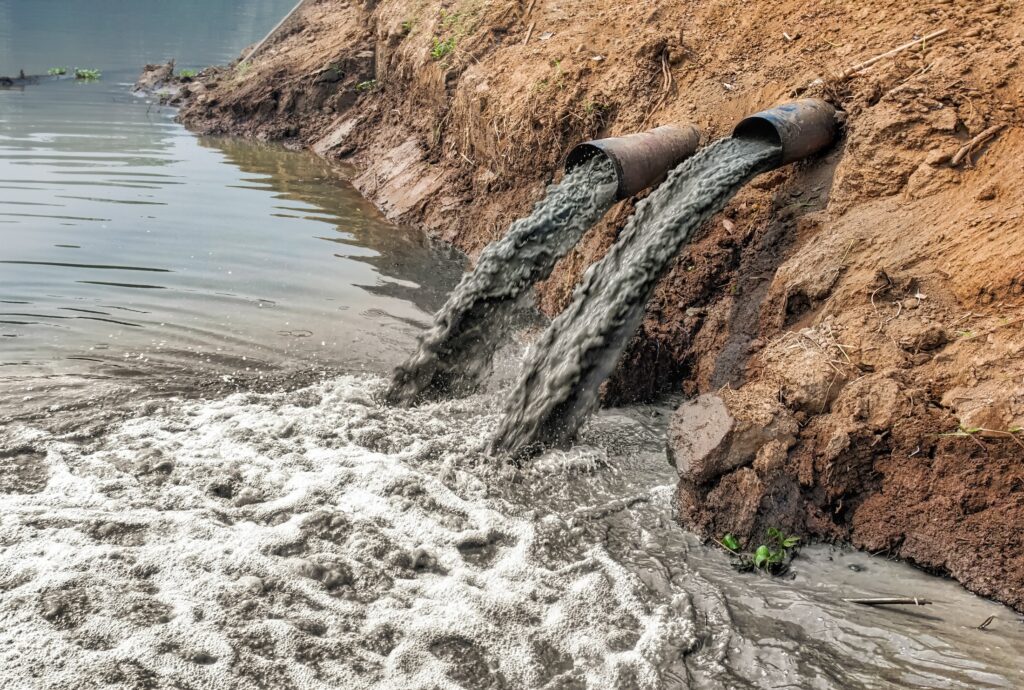
The point is, some bad actors pollute to save money and cut corners, trying to avoid complying with laws meant to protect our health and well-being. Their actions directly impact communities, and put the burden on others to clean-up.
We can’t risk letting polluters off the hook. These offices play a critical role in protecting the health and safety of our rivers and clean water. Shutting these offices down, moving out experienced attorneys, and freezing the hiring of new ones, will only further endanger our communities.
Public lands are the birthright of every American. One of the great privileges of living in this country is the ability to access hundreds of millions of acres to enjoy the great outdoors — all for free.
People care about and use public lands for many reasons. From hunters and anglers to miners and ranchers, hikers and mountain bikers—there is something for almost everyone on public lands. But what if you live in a city and never set foot on public lands? Why care about them then?
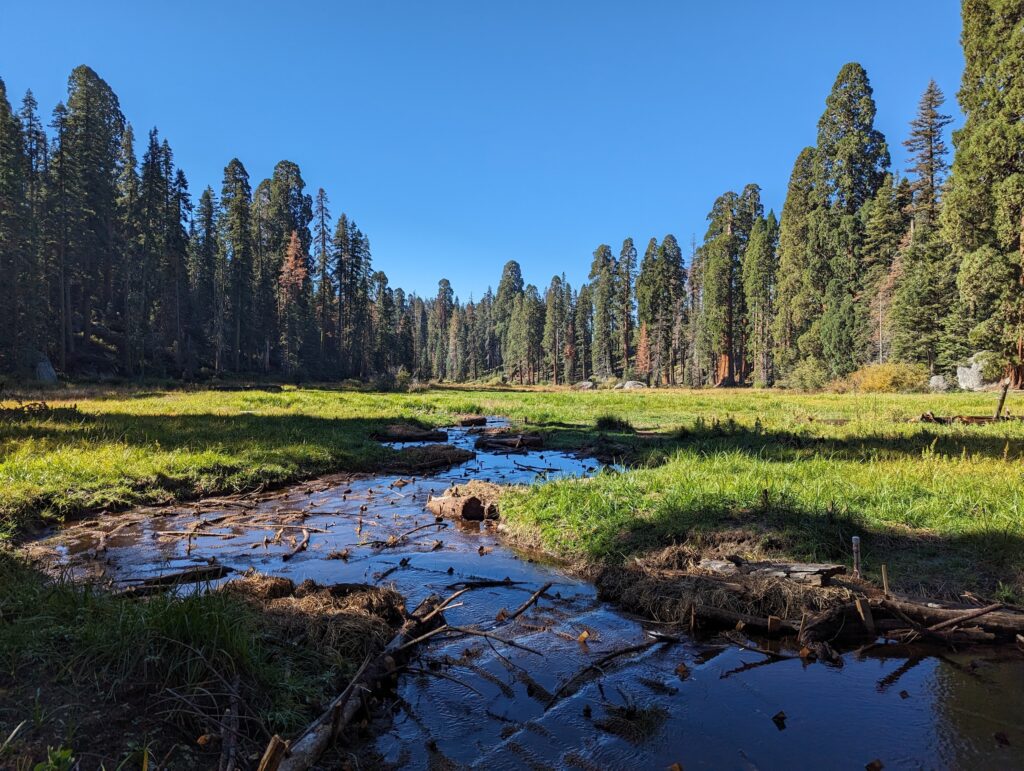
Not everyone hunts, fishes, mines, ranches, hikes, or bikes; but everyone, truly everyone, depends on clean water. The big secret about public lands is that they are arguably the country’s single biggest clean water provider. According to the US Forest Service, National Forests are the largest source of municipal water supply in the nation, serving over 60 million people in 3,400 communities across 33 states. Many of the country’s largest urban areas, including Los Angeles, Portland, Denver, and Atlanta receive a significant portion of their water supply from national forests.
Healthy forests and grasslands perform many of the functions of traditional water infrastructure. They store water, filter pollutants, and transport clean water to downstream communities. And they do it naturally — essentially for free. When rivers are damaged from land uses on public lands, we all pay the price — literally; we all pay more in taxes and utility bills to clean up the water.
What happens on the public’s land also happens to the public’s water. The importance of managing public lands for the benefit of public water is so fundamental, it has been a pillar of public lands management agencies’ missions since their inception over a century ago. For example, The Organic Act of 1897[1] that created the US Forest Service stated:
No public forest reservation [national forest] shall be established, except to improve and protect the forest within the reservation [national forest] or for the purpose of securing favorable conditions of water flows, and to furnish a continuous supply of timber for the use and necessities of citizens of the United States.
When land is degraded due to mining, clear-cutting, overgrazing, and other uses, the negative effects are carried far, far downstream, all the way to your faucet. Poor land management practices also release sediments and contaminants into public water supplies. Such pollution has major consequences, from raising water treatment costs to potentially causing serious public health crisis.
Poor land management is the main driver of desertification — the phenomenon of lush riparian areas turning into barren plains. Desertification depletes the public’s supply of water, as well as the public’s supply of grass for livestock and big game that ranchers and hunters depend on.
Access to clean, reliable water is a need that cuts through all social and political divisions. It is fundamental to life, literally. Land management that neglects watershed health amounts to peeing in the nation’s public pool — something I think we can all agree we don’t want to happen to our drinking water.
[1] For a good chronological summary of major FS law and policies since the Organic Act of 1897, see:
https://www.fs.usda.gov/Internet/FSE_DOCUMENTS/fseprd530507.pdf
No matter who you are or where you live, we all need clean, safe, reliable drinking water. It’s a basic need and a human right. And most of our water comes from rivers.
A Republican president, Richard Nixon, created the Environmental Protection Agency in 1970 through executive order.
In his State of the Union address that year he said, “Clean air, clean water, open spaces – these should once again be the birthright of every American.”
The mission of the Environmental Protection Agency is to protect the environment and human health. The EPA protects clean water primarily through the Clean Water Act, setting legal limits on pollutants discharged into waterways, regulating point sources like factories through the National Pollutant Discharge Elimination System (NPDES), and working with states to monitor and enforce compliance with water quality standards. The EPA uses the Safe Drinking Water Act to set limits on contaminants in drinking water, ensuring its safety for public consumption.
Successes for your clean drinking water:
Before the Environmental Protection Agency was established, and before we had federal clean water safeguards, many rivers across the country were choked with pollution and devoid of life.
Today, while we still have a lot of work to do, we celebrate cleanup progress on many rivers nationwide. Here are three examples of rivers – that are sources of drinking water – that have been cleaned up with the help of the EPA:
- The Delaware River (Delaware, New Jersey, Pennsylvania, New York): More than 17 million people get their drinking water from the Delaware River, including New York City, Philadelphia, Trenton, Wilmington, and northern New Jersey. The EPA has worked to reduce pollution and improve water quality in the Delaware River. Learn more
- The Cuyahoga River (Ohio): The Cuyahoga is a drinking water source for tens of thousands in the Akron area. Historically known for its pollution and fires, the Cuyahoga River has undergone significant cleanup efforts through the EPA’s initiatives, improving its water quality and making it a vibrant natural asset. Learn more
- The Hudson River (New York): The Hudson is a drinking water source for millions of New York residents in the Hudson Valley and New York City. The river has seen substantial efforts to reduce industrial contamination, especially from PCBs. The EPA’s cleanup programs have helped restore the water quality, benefiting both ecosystems and water supplies for surrounding areas.
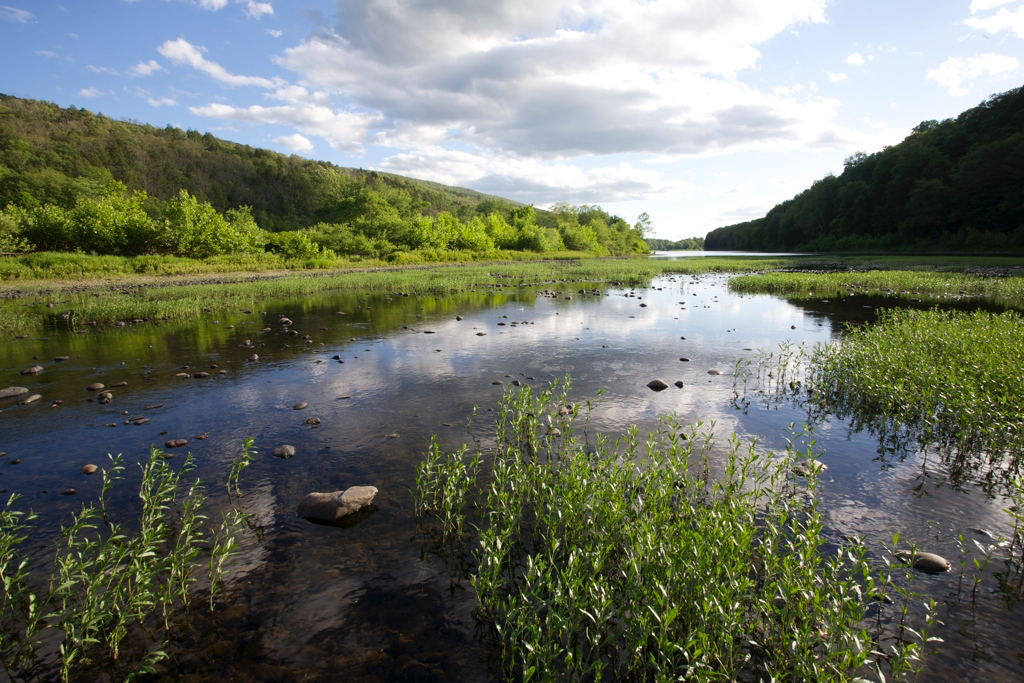
How the EPA protects your clean water and rivers:
Pollution from factories…contaminated runoff from streets and farm fields…sewage pollution…toxic “forever chemicals”…there are many types of pollution that can harm our drinking water, rivers, and public health. Here are some ways the EPA works to protect clean water:
- Setting standards: EPA establishes legal limits on the levels of various contaminants allowed in surface waters and drinking water, based on health concerns and available technology to remove them.
- Permitting system: The NPDES program requires facilities that discharge pollutants into waterways to obtain permits, which specify the allowed levels of pollutants and monitoring requirements.
- Monitoring and enforcement: EPA conducts inspections and monitoring to ensure compliance with water quality standards, and can take enforcement actions against polluters.
- Collaboration with states: EPA works with state agencies to implement water quality protections, allowing states to tailor safeguards to local conditions.
- Public information: EPA provides information to the public about water quality in their area, including pollution levels in specific rivers.
How you can speak up for clean water
Clean water is a basic need and a human right, vital to our health and well-being. Please join us in standing up for river protection.
It might seem obvious to state that the Clean Water Act (CWA), established in 1972, is critical to the drinking supply of millions of Americans. After all, this fundamental U.S. law is specifically tasked with reducing water pollution and protecting the nation’s water resources. Unfortunately, the incoming administration is very focused on deregulation, and polluters are working to undermine or outright gut vital clean water safeguards. This means some or all of the Act could be on the chopping block. With this risk in mind, let’s look at five ways the Clean Water Act is so important to protecting your clean water.
1. It sets water quality standards
The Act mandates that states establish water quality standards for all surface waters, defining the desired condition of a water body and the necessary protections to achieve that condition. These permits set scientifically based limits or restrictions on the types and amounts of pollutants, ensuring that waters are safe for activities like swimming, fishing, and most critically, as a source of drinking water.
What does this mean for you?
Strong federal standards are important because everyone in our country should have clean, safe, reliable drinking water – it shouldn’t matter who your governor is or what zip code you live in. It doesn’t matter what political party is in office in your state, wherever you live in a city or the country, there are water quality standards that protect your drinking water. Plus, rivers and streams flow across state boundaries. Without federal safeguards, the actions in a neighboring state could pollute your water, even if your state has good protections.

2. It regulates direct discharges into waterways
The Clean Water Act requires facilities to obtain permits before discharging pollutants directly into bodies of water. These permits set limits on the types and amounts of pollutants that can be released, ensuring that discharges do not harm water quality or public health. This system helps control pollution from sources like factories and wastewater treatment plants.
What does this mean for you?
Your river should not be used as a sewer or dumping ground. Companies need to responsibly dispose of their waste. These safeguards are in place so no one can just dump chemical waste in rivers, which prevents an untold amount of harmful contaminants from getting in your drinking water.
3. It funds wastewater treatment facilities
The Clean Water Act provides financial assistance to states and communities to support the construction and improvement of sewage treatment plants. This funding is crucial in reducing the discharge of untreated or inadequately treated wastewater into rivers, lakes, and streams, thereby improving overall water quality.
What does this mean for you?
The cost of wastewater treatment infrastructure is significant, especially in communities with polluted waterways. The financial assistance the Clean Water Act provides helps offset this large cost for communities in need.
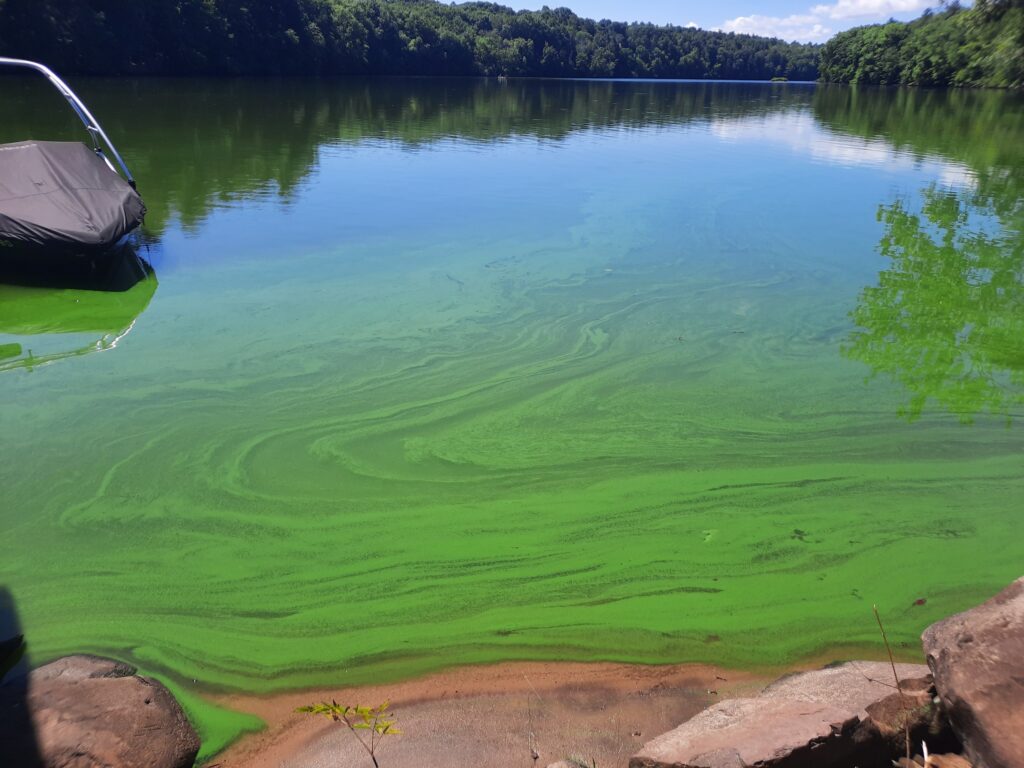
4. It calls out nonpoint source pollution
The Clean Water Act recognizes that pollution also comes from indirect sources like agricultural runoff and urban stormwater. Through a variety of regulations and programs, it encourages states to develop and implement plans to manage and reduce this type of pollution, which is a significant contributor to water quality issues nationwide.
What does this mean for you?
Nonpoint pollution (contamination that comes from many sources and can’t be traced back to a single point) can be difficult to identify, but this guidance gives states the ability to attempt to manage these pollution sources, which can cost a lot of money to remove from your drinking water. If left unchecked this type of pollution can fuel toxic algae outbreaks and impact drinking water sources.
5. It protects wetlands and aquatic river ecosystems
The Act includes rules to protect wetlands and other vital small streams from being filled or degraded. These areas are essential for maintaining water quality, providing wildlife habitat, and supporting biodiversity absorbing floodwaters. By regulating activities that could harm these ecosystems, the Clean Water Act helps preserve their ecological integrity.
What does that mean for you?
Wetlands filter pollution and help safeguard our drinking water. They also absorb and store floodwaters, protecting communities. What’s more, they provide vital wildlife habitat. Freshwater species are going extinct at a significant rate, largely due to loss of livable habitat. Protecting wetlands and streams means the critical ecosystems that house so many species can continue to support this important biodiversity.protects the entire web of life.
For over 50 years, the Clean Water Act has played a pivotal role in improving the health of U.S. waters, making them safer for recreation, wildlife, and as sources of drinking water. Eliminating the Clean Water Act or any part of it puts your drinking water at risk and potentially damages ecosystems that support thousands of species. We must support and strengthen these federal clean water safeguards, to ensure everyone in our country has safe, clean, reliable water. This bedrock law must be maintained, and federal protection of our rivers, streams, and wetlands must continue.
It’s hard to watch the news of the destructive fires in southern California without despairing for the safety and well-being of our loved ones, friends, and neighbors. Our hearts go out to all of you, as well as our impacted partners and supporters.
Today, many are rightly focused on the urgent need to protect themselves and their communities, and follow the guidance of emergency personnel who are putting their lives on the line to manage a dangerous and deadly situation. For those of us who are humbly embracing the gift of having time and space to think about recovery after this crisis, there are some truths on which we can ground ourselves to be more effective partners in helping the people and places we love.
We must acknowledge the reality of our situation, focus on facts, and not be misled by fiction. The climate crisis continues to deepen its impact on all people, regardless of identity, wealth, or geography. Today, parts of southern California are experiencing their driest winter season in the past 150 years. These exceptionally dry conditions are happening at the same time as extreme and prolonged winds, creating optimal conditions for catastrophic fires in our communities. Sadly, these kinds of disastrous fires are likely to become even more common as the effects of climate change become more severe.
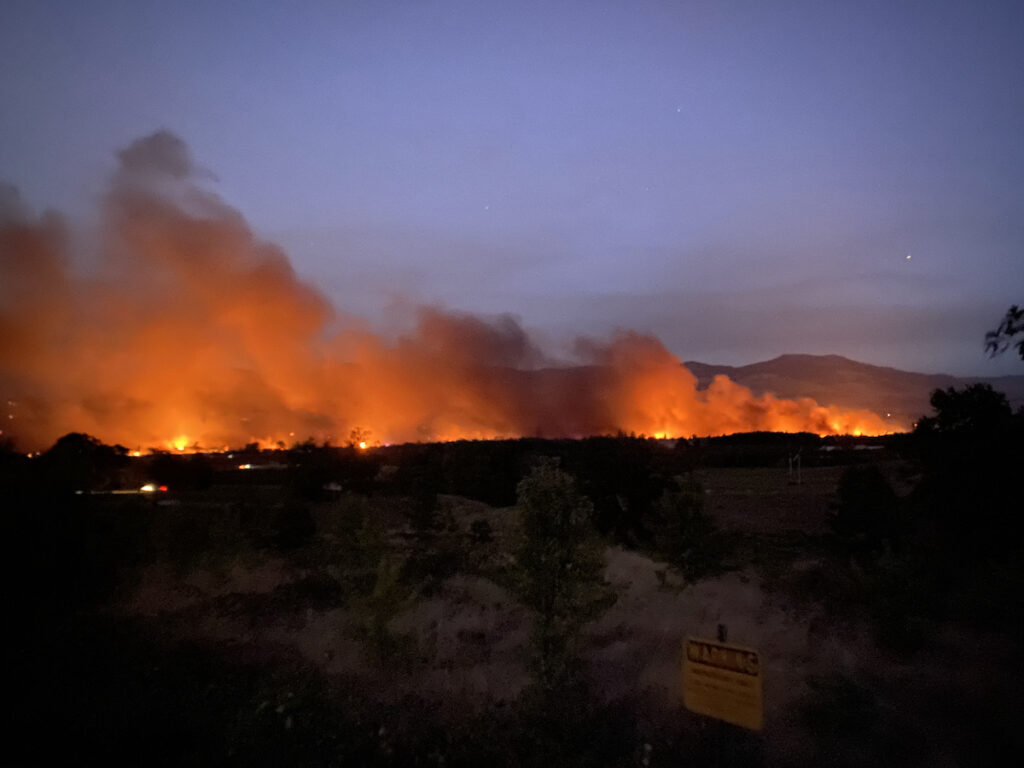
We must also acknowledge our power to put solutions in place that will help people and communities right now and lessen the long-term impacts of climate change. Extreme fires not only threaten our homes and lives, but also the thing survivors need to live: clean, safe water for people and the environment. Fortunately, as we adapt to our ever-changing world, we know what we need to do:
We need to invest in water infrastructure for community safety. Healthy rivers are unmatched when it comes to providing clean, healthy water for people and nature, along with many other benefits. We know that the places in which we live are as much a part of our water infrastructure as the pipes that carry water to our homes. Stewarding rivers and the surrounding landscape through wildfire management – as opposed to suppression – is key to protecting our communities. Wildfire management does not only reduce the intensity of uncontrolled fires. It protects the land and rivers where water flows and the dams, pipes, and homes where water goes. Californians have already taken a critical step to make this work possible. Nearly 60% of voters approved $10 billion in state funds to pay for climate resilient solutions. These solutions include: drought, flood, and water supply projects; protecting communities from wildfire; and restoring and protecting natural areas.
Now, we can ensure those public funds can be accessed by continuing our support for the people and places who need them most. Whether through the largest dam-removal project in history or the largest meadow restoration in the headwaters of one of California’s most pristine drinking water sources, private-public partnerships have yielded unprecedented success in California to restore rivers and the clean, healthy water they provide for people and nature. We’ve done it before; we will do it again. Most importantly, we will do it together.
